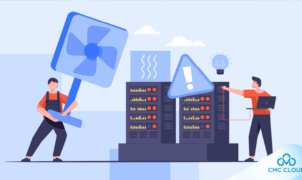
Household electrical appliances like air purifiers and fans play a significant role in keeping your living space fresh and clean. However, to ensure optimal performance and cleanliness, regular maintenance and cleaning are necessary. This article provides you with practical tips for shining your household electrical appliances, specifically air purifiers and fans.
1- Shining Your Air Purifier
An air purifier is a valuable household appliance designed to improve indoor air quality by removing airborne particles like dust, allergens, and pollutants. To maintain its efficiency and ensure it continues to provide clean air, regular cleaning and maintenance are essential. In this detailed guide, we’ll delve deeper into each aspect of shining your air purifier and offer step-by-step instructions for effective maintenance.

Please note: Safety always comes first. Ensure that the air purifier is unplugged from the power source before performing any maintenance.
1. Turning Off the Power
Before you start cleaning and maintaining your air purifier, it’s crucial to ensure that it’s not connected to a power source. This step is essential to prevent accidents or electrical shock.
2. Regular Filter Replacement
Filters are the heart and soul of an air purifier. They trap and remove airborne contaminants, ensuring the air you breathe is cleaner and healthier. Over time, filters become clogged with the particles they capture, reducing their effectiveness. To keep your air purifier running optimally, follow these steps:
a. Check the Manufacturer’s Recommendations: Different air purifiers have various filter replacement schedules. Refer to your device’s manual or the manufacturer’s recommendations to determine when filters should be replaced.
b. Purchase Replacement Filters: Once you know it’s time for a filter change, purchase replacement filters that are specifically designed for your air purifier. Using the correct filters is vital for maintaining performance.
c. Changing the Filter: To change the filter, follow these general steps:
- Open the air purifier according to your model's instructions.
- Remove the old filter and dispose of it properly.
- Insert the new filter following the manufacturer's guidelines.
- Secure the air purifier's casing back in place.d. Note on Washable Filters: Some air purifiers have washable filters. If yours does, remove the filter and gently rinse it with water. Allow it to dry completely before reinserting it into the air purifier.
3. Cleaning Filters
If you have a washable or reusable filter, follow these steps for effective cleaning:
a. Filter Removal: Remove the filter according to your air purifier’s instructions. It’s essential to follow the correct steps to avoid damaging the filter.
b. Rinse with Water: Gently rinse the filter under cool running water. Avoid using hot water, as it can damage the filter.
c. Drying Time: Allow the filter to dry completely. This may take several hours or overnight, so plan accordingly.
d. Reinserting the Filter: Once the filter is dry, reinsert it into the air purifier following the manufacturer’s guidelines.
e. Filter Replacement: If the filter is not washable or if it’s too damaged, it’s crucial to replace it with a new one.
4. Cleaning the Outer Surface
The outer surface of the air purifier often collects dust and dirt. Cleaning this part helps maintain a fresh appearance and prevents the accumulation of grime. Follow these steps:
a. Unplug the Air Purifier: As a safety precaution, unplug the air purifier from the power source.
b. Damp Cloth: Use a soft, damp cloth to gently wipe down the outer surface of the air purifier. Make sure the cloth is not soaked, as excess moisture can damage the device.
c. Dry Thoroughly: After cleaning, let the air purifier dry completely before plugging it back in.

5. Checking Air Ducts
The air ducts of your air purifier play a critical role in delivering purified air to your living space. Ensuring they are clear and unobstructed is essential for effective filtration. Here’s how to do it:
a. Visual Inspection: Carefully inspect the air ducts from the air purifier to the space you want to purify. Ensure there are no visible obstructions or kinks in the ducts.
b. Unplugging: Disconnect the air purifier from the power source before checking the air ducts.
c. Removal and Cleaning: If you notice any obstructions or buildup inside the air ducts, follow the manufacturer’s instructions to remove and clean them. Use a soft brush or a vacuum cleaner to remove dust and debris.
d. Reconnecting: After cleaning the air ducts, securely reconnect them to the air purifier.
Regularly performing these maintenance steps will ensure that your air purifier continues to function efficiently. Not only will it maintain good air quality in your home, but it will also extend the life of your appliance. Clean air purifiers not only provide cleaner air but also consume less energy, making them more cost-effective and environmentally friendly.
2- Shining Your Fan
Fans are invaluable appliances, especially during the sweltering summer months. They help circulate air, creating a cooling effect that makes indoor spaces more comfortable. Regular maintenance and cleaning of your fan are essential to ensure it operates efficiently, delivers refreshing air, and prevents the buildup of dust and grime. In this comprehensive guide, we will break down the steps for maintaining and cleaning your fan to keep it in optimal condition.

As with all electrical devices, prioritize safety by unplugging the fan from the power source before beginning any maintenance work.
1. Turning Off the Power
Safety should always be your top priority. Before you commence any cleaning or maintenance tasks on your fan, make sure to unplug it from the electrical socket to avoid the risk of electric shock.
2. Removing Fan Blades
In many fan models, the fan blades can be removed to simplify the cleaning process. This makes it easier to access and clean every nook and cranny of your fan.
3. Cleaning Fan Blades
Fan blades are susceptible to accumulating dust and debris, which can reduce the efficiency of your fan. Here’s a step-by-step guide on cleaning fan blades:
a. Unplug the Fan: As always, ensure that your fan is disconnected from the power source.
b. Remove the Blades: If your fan allows for blade removal, gently take off the blades from the fan. Follow your fan’s user manual for guidance.
c. Wipe Down Blades: Using a soft, damp cloth, gently wipe down each fan blade to remove dust and buildup. Be thorough in your cleaning to ensure that no residue is left behind.
d. Alternative Cleaning Tools: If necessary, you can also use a soft brush, such as a paintbrush, to dislodge stubborn dirt and dust.
e. Drying Blades: After you’ve cleaned the blades, make sure they are thoroughly dry before reattaching them to the fan. This prevents moisture-related issues, such as rust.
4. Cleaning the Motor Casing
The motor casing houses the fan’s motor, and it is another area that can collect dust and grime. Here’s how to clean it effectively:
a. Disconnect the Power: Always unplug the fan before cleaning to ensure your safety.
b. Damp Cloth Cleaning: Use a soft, damp cloth to wipe down the motor casing. Be careful not to use an excessively wet cloth, as water can damage the motor.
c. Drying the Motor: After cleaning, allow the motor casing to dry entirely before reconnecting the power.
5. Checking the Motor
After a prolonged period of disuse, it’s essential to inspect the fan’s motor to guarantee that it’s functioning smoothly and safely. Here’s what you should do:
a. Power Disconnection: As always, make sure the fan is unplugged to prevent accidents.
b. Motor Inspection: Carefully check the motor to see if there is any visible damage or obstruction. Inspect for loose wires or any unusual noises, which might indicate a problem.
c. Cleaning the Motor: While it’s not recommended to disassemble the motor casing, you can use a can of compressed air to blow away any dust or dirt that may have collected on or near the motor.
d. Reconnecting the Power: After the inspection and cleaning, reconnect the fan to the power source and test it to ensure that it operates smoothly.

By regularly following these maintenance steps, you can ensure that your fan continues to work efficiently. A clean fan not only circulates air more effectively but also prolongs the lifespan of the appliance. Additionally, it prevents the circulation of dust and allergens, contributing to a healthier indoor environment.
Proper maintenance and cleaning are essential for keeping your household appliances, including fans, in peak condition. A well-maintained fan will not only help you stay cool during hot weather but also ensure cleaner air circulation by preventing the buildup of dust and allergens. The steps outlined in this guide are straightforward and can be performed regularly to extend the life of your fan and maintain a comfortable living space.
Conclusion
Household electrical appliances like air purifiers and fans are essential for maintaining a comfortable living environment. Proper maintenance and cleaning of these appliances help ensure their efficient operation and contribute to better indoor air quality. By following the tips provided, you can keep your air purifiers and fans in excellent condition, promoting a healthier and cleaner living space.







 Welcome to LawyerNote, your premier destination for expert legal counsel tailored to your unique needs. At LawyerNote, we specialize in navigating the complexities of the legal system, offering comprehensive solutions to our valued clients. With a team of seasoned attorneys covering diverse fields including corporate law, family law, and criminal defense, we’re equipped to handle a wide spectrum of legal matters. Our unwavering commitment to excellence, integrity, and client satisfaction sets LawyerNote apart. Whether you’re grappling with a complex litigation case or seeking guidance on business transactions, LawyerNote is your trusted legal partner every step of the way.
Welcome to LawyerNote, your premier destination for expert legal counsel tailored to your unique needs. At LawyerNote, we specialize in navigating the complexities of the legal system, offering comprehensive solutions to our valued clients. With a team of seasoned attorneys covering diverse fields including corporate law, family law, and criminal defense, we’re equipped to handle a wide spectrum of legal matters. Our unwavering commitment to excellence, integrity, and client satisfaction sets LawyerNote apart. Whether you’re grappling with a complex litigation case or seeking guidance on business transactions, LawyerNote is your trusted legal partner every step of the way.




